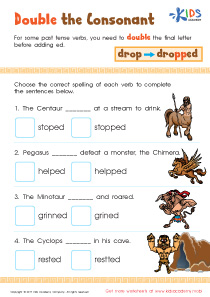Reading comprehension Normal Consonant Digraphs Worksheets for Ages 7-9
6 filtered results
-
From - To
Enhance your child's literacy skills with our engaging Reading Comprehension Normal Consonant Digraphs Worksheets, designed specifically for ages 7-9. These printable worksheets make learning fun with captivating stories and exercises that focus on consonant digraphs like "ch," "sh," "th," and more. Each worksheet helps young readers improve their understanding and fluency by combining phonics with context. Perfect for classroom or home use, our worksheets offer varied activities such as matching, fill-in-the-blank, and short passages to boost reading comprehension and confidence. Watch your child master key reading skills with this expertly crafted resource.
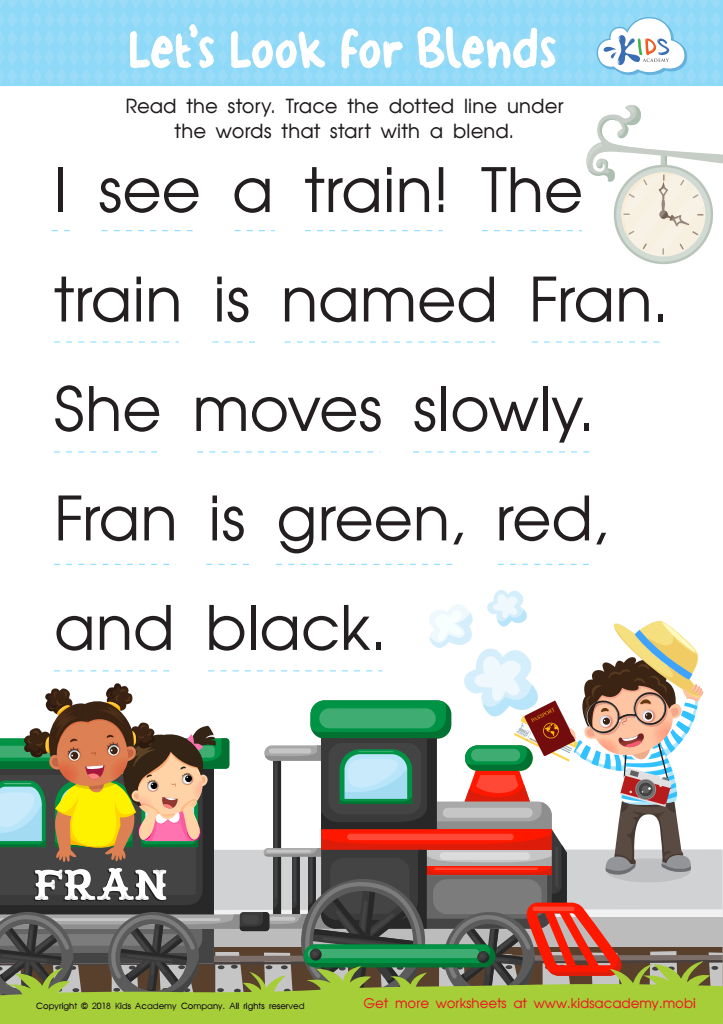

Let's Look for Blends Worksheet
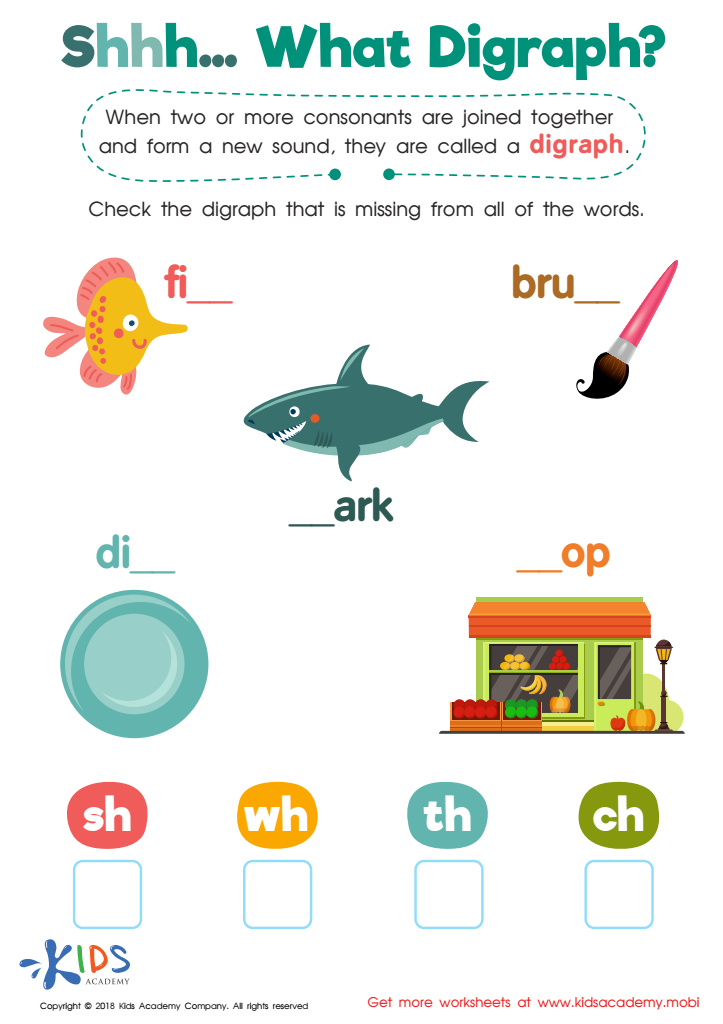

Shhh... What Digraph? Worksheet
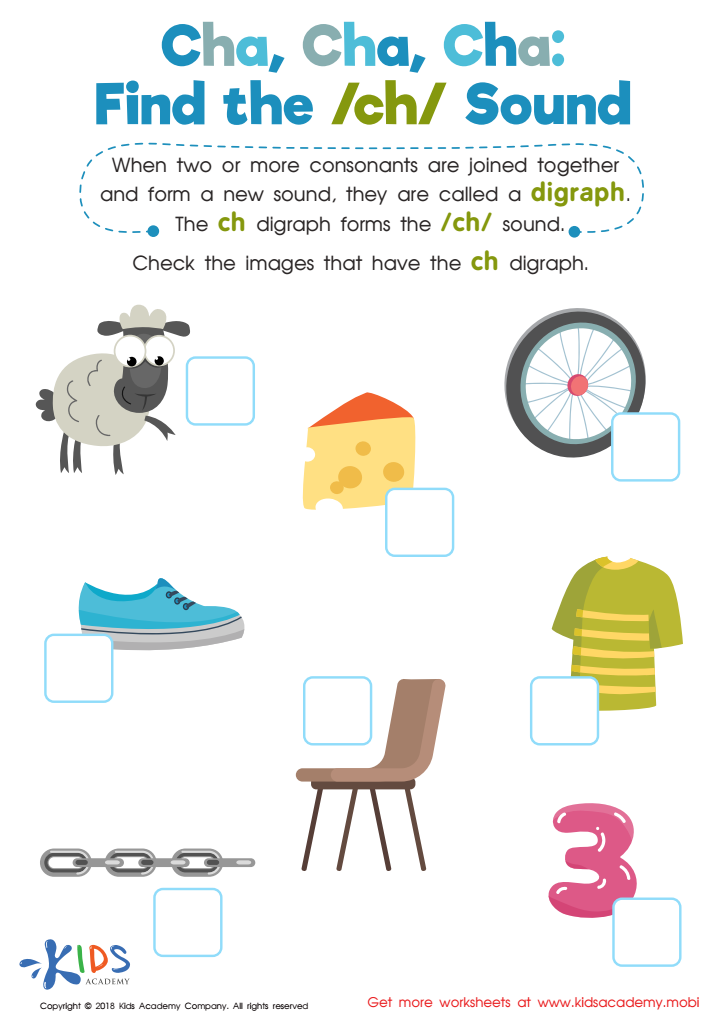

Cha, Cha, Cha: Find the /Ch/ Sound Worksheet
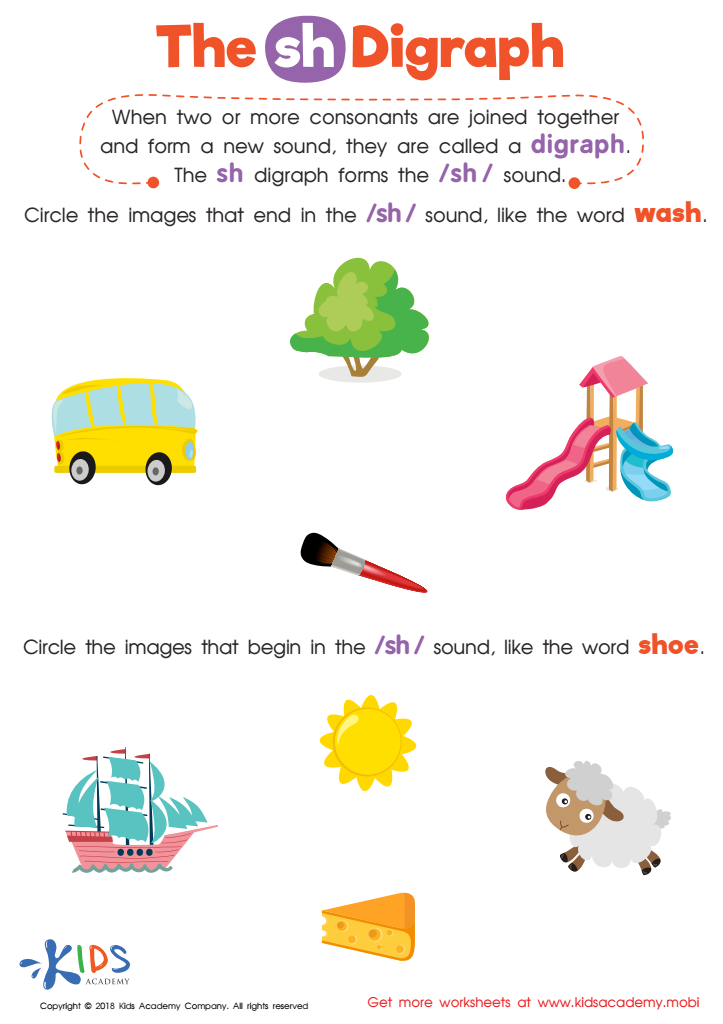

The SH Digraph Worksheet
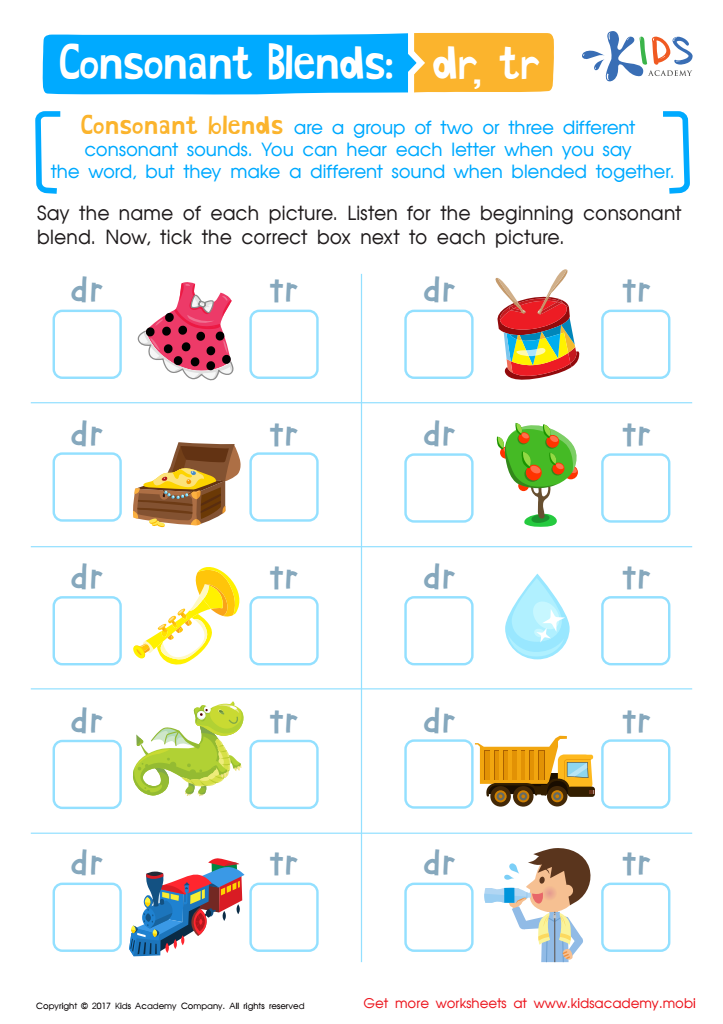

Consonant Blends: "Dr" and "Tr" Printable
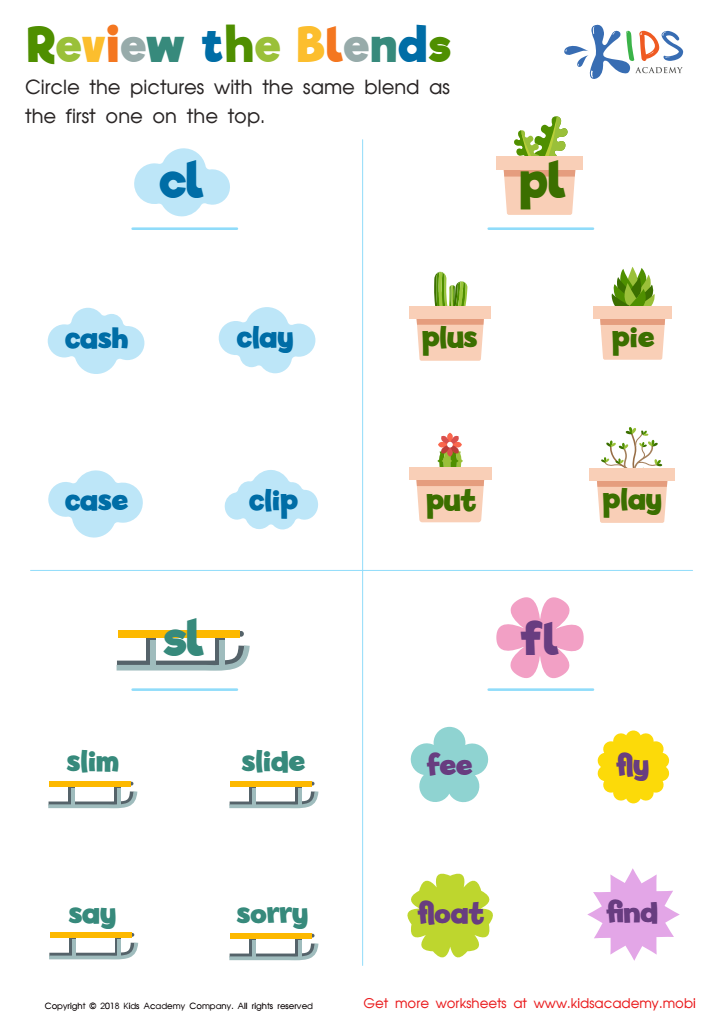

Review the Blends Worksheet
Reading comprehension and knowledge of normal consonant digraphs are fundamental components of literacy development for children ages 7-9. Consonant digraphs—combinations like "ch," "sh," "th," and "wh"—represent specific sounds in the English language. Mastery of these digraphs enhances children's ability to decode words accurately, a critical skill for fluent reading.
When children grasp the concept of normal consonant digraphs, they can more easily translate written text into spoken language and vice versa. This reinforces word recognition, allowing children to read faster and with more confidence, which in turn improves their comprehension. Good reading comprehension is not just about knowing words but understanding and engaging with the text, fostering a deeper connection to the material.
Parents and teachers play pivotal roles in guiding children through this developmental phase. By emphasizing phonics instruction that includes focus on consonant digraphs, they provide children with indispensable tools for tackling increasingly complex reading material. Building a strong foundation in these early years can shape a child's lifelong reading habits, making the educational journey smoother and more enjoyable. It equips children with the skills they need to succeed in academics and beyond, promoting cognitive development, critical thinking, and a love for learning that can carry them through their entire lives.

 Assign to My Students
Assign to My Students




